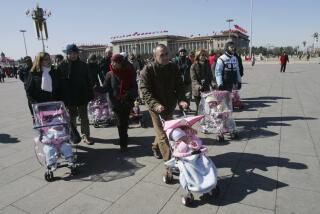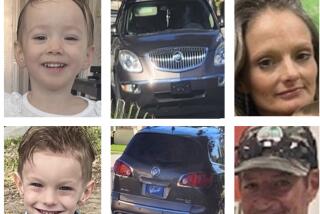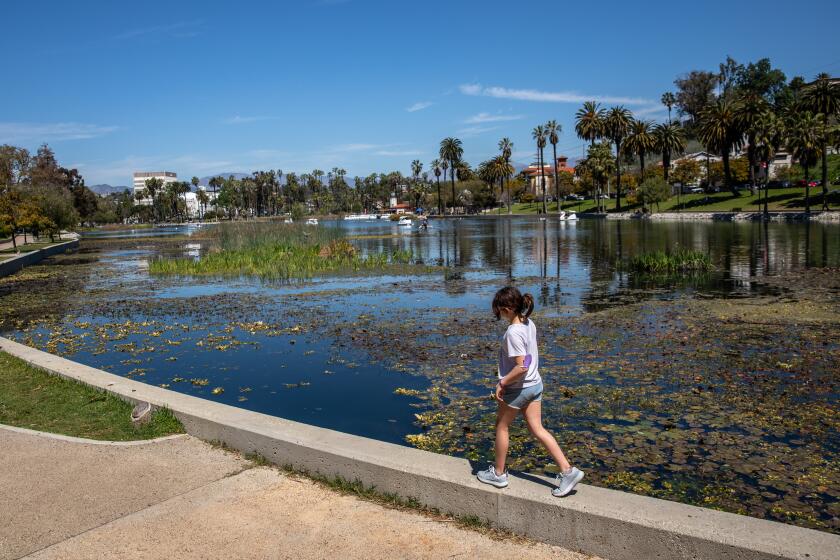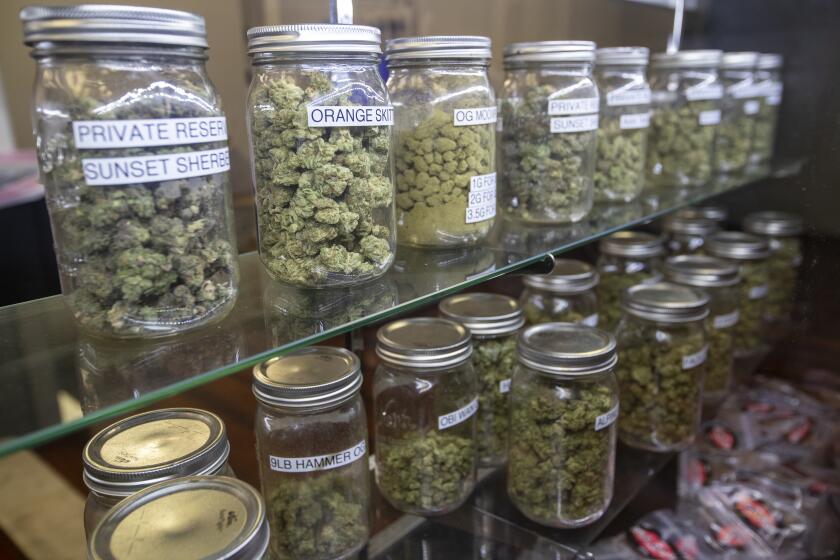Great Read: For ‘banished’ adoptees, search for Irish family is risky
Annie Biggs had crossed an ocean to find her mother, and her journey had come to this: a locked door on a small street in Dublin.
She had spent two decades scouring online genealogy records, searching for the woman who gave birth to her in one of Ireland’s notorious mother-and-baby homes.
Had she thought about Annie in the half-century since she was whisked away to be adopted by an American couple? Did she have any idea her daughter had been sent to Fresno? Would she welcome her? Would she even answer the door?
Biggs knocked and knocked, but no one responded. For four days, she went back again and again, until neighbors asked her to leave.
Devastated, Biggs returned to her hotel room, wondering if she should give up her search. Two days later, the phone rang.
“This is your mum,” said the voice at the other end.
::
Biggs is one of at least 1,900 Irish children adopted by American families from the 1940s to the 1970s after they were born to unwed mothers in homes run by the Catholic Church.
Grim conditions inside the homes, where thousands of ostracized young women were sent after they became pregnant, remained largely secret until a couple of decades ago. Finally, news about abuses, substandard medical care and forced adoptions began to attract mainstream attention, buoyed by books and films such as “The Magdalene Sisters” in 2002 and “Philomena” in 2013.
The number of people who have asked to include their information on Ireland’s National Adoption Contact Preference Register, a database that helps adoptees and their birth parents find each other, has jumped, according to government records. In 2012, 542 people asked to join the register, a number that increased to 721 in 2013. By last September, 628 more people had asked to be placed in the register, records show.
In June, the discovery of records showing that nearly 800 babies had died over the years at one home in Galway, many from malnutrition and neglect, brought another surge of interest. Within weeks, membership in a Facebook group devoted to the “banished,” a descriptor used by many of the children adopted in the U.S., more than doubled to 600. The number enrolled in another group named after the Bessborough home in Ireland’s County Cork jumped from 60 to 310.
Mari Tatlow Steed, who was born in Bessborough and serves as president of the Philadelphia-based Adoption Rights Alliance, said the news from Galway led a number of Irish-born Americans to question the circumstances of their birth.
“What I’ve been seeing from some of the Americans, especially coming forward, is they join the [Facebook groups] and say ‘I was sort of plodding along in life great’ … but after reading all these news stories, ‘Holy Christ, I’ve just been rocked. I just didn’t know my own story.’”
The Irish government has embarked on a three-year investigation into the conditions at the homes and allegations that thousands of illegal adoptions took place. In recent months, social service workers in Ireland have contacted Steed, hoping she can help them find adoptees in the U.S. at the request of mothers and relatives overseas.
Attempts to find mothers or children can be arduous, hampered by poor Irish record-keeping and bureaucratic indifference, advocates say. The journey also comes with an inherent risk.
For the “banished,” there is the fear that their birth mothers will recoil at the idea of reconnecting with a child who represents a painful time in their lives. For the mothers, there is the fear their children will resent them for giving them up for adoption in the first place.
::
Growing up, Ann Clarke always knew she had a brother she had never met.
Her mother, Frances Brouder, had become pregnant when she was 19 in the town of Limerick. Her parents, who knew it would bring shame among their neighbors and friends in predominantly Catholic Ireland, sent her away to Bessborough, Clarke said.
Brouder told her daughter that her meals consisted of bread and water, and she saw no meat other than an occasional bite of sausage on Sundays. The women spent most of their days working in the laundry at Bessborough, a chore that kept them on their feet for hours. They were responsible for collecting wood for a fire to keep the room warm.
“They were eight months pregnant cutting down bloody trees,” said Clarke, who now lives in Staffordshire, England.
Her mother, who didn’t want to be interviewed for this article, named the baby George. He was taken away 18 months after he was born and adopted by a family in the U.S. Clarke says her mother was placed on a boat to Liverpool shortly afterward. She never went back to Ireland.
Clarke often told her children they had an uncle, but worried they would never meet him.
“He’s always been … like a shadow,” Clarke said.
After decades of uncertainty, Clarke said her mother finally asked a family friend to locate her son. There were dozens of phone calls and back-and-forth emails with social service workers who sifted through adoption records, and Brouder’s son eventually was tracked to California. His adoptive family had changed his name to Greg.
In 2009, Brouder asked her daughter to contact her brother. But Clarke worried about the effect a reunion could have on her mother, who had long feared her son wouldn’t understand why she had to give him up. Clarke said her mother sometimes fell into a depression when thinking about the baby boy she’d lost decades earlier.
Half concerned, half hopeful, Clarke started typing.
“Greg, I know this is going to come as a shock, but I believe we’re related,” she wrote.
Thousands of miles away, Greg Bayer opened the email in his downtown Long Beach apartment.
Bayer, 65, had been adopted by a deputy U.S. marshal and his wife, the only Irish baby adopted in Alaska, records show. He learned of the circumstances of his birth as a teenager. He was close with his adoptive parents, and believes he had a better upbringing in America than he would have had in impoverished Ireland.
Bayer had begun to search for his mother in the 1990s, but the difficulty of attaining records in Ireland and the lack of cooperation from the nuns connected to the home where he was born stalled his progress.
Even if he managed to locate his mother, Bayer wasn’t sure if he would have risked contacting her. He was afraid she would reject him.
As soon as Bayer opened his email, he realized he had nothing to be afraid of.
“I don’t know how you did it, but am so happy you did,” he wrote back in an email titled “Oh my God, you’ve found me.” “You have always been in my heart.”
In the last few years, Bayer and his mother have done their best to recapture the time they lost. Bayer visits her in England at least once a year, and they speak often by phone. On his first visit, in 2010, his mother handed Bayer a copy of a baby picture she’d carried with her for more than 60 years.
Sitting at a restaurant in Long Beach, tears welled up in Bayer’s eyes.
“If you can imagine that,” he said, “living all your life knowing your mother is on the other side of the world but out of reach.”
::
Biggs’ search for her mother began in 1985, nearly a quarter-century before she found herself knocking on the woman’s door in Dublin.
She’d traveled to Ireland once before, in 1990, and made contact with a nun who worked for an Irish adoption agency and had access to her birth records. She knew the name of Biggs’ mother, and possibly where to find her.
But when she asked for that information, the nun said her mother wanted nothing to do with her.
“I was basically told to go home and forget this,” Biggs said.
For 18 years, Biggs did just that. But after some gentle urging from her daughter, they both decided to go back in 2008.
Biggs’ constant presence in the neighborhood forced her mother’s hand. Before neighbors figured out who had been knocking on her door, the woman reached out to Biggs and asked her to meet in the hotel lobby.
Biggs’ mother asked to keep the meeting secret. Over the course of four hours, she told Biggs she had been raped when she was 14 and became pregnant with Annie. She was sent away to Castle Pollard in County Westmeath, another one of Ireland’s mother-and-baby homes, where Annie lived until she was 5.
In the decades since, Biggs’ mother had married and had several more children, but Biggs’ half-brothers and sisters didn’t know they had another sibling. Annie’s existence was a secret, and her mother wanted to keep it that way.
“She told us she wouldn’t allow us in her home,” said Biggs, 65. “She wouldn’t allow us to meet her family.”
Biggs returned to California, heartbroken that her mother didn’t want a relationship but grateful that she had finally found some answers about her past.
“Not a day goes by that I do not think about her,” Biggs said. “She’s never far away. Ever.”
Months later, Biggs received a Christmas card from her mother. In the years since, Biggs has sent two cards a year. One on St. Patrick’s Day, the other on Christmas.
Her mother has never written back.
Twitter: JamesQueallyLAT
More to Read
Sign up for Essential California
The most important California stories and recommendations in your inbox every morning.
You may occasionally receive promotional content from the Los Angeles Times.











